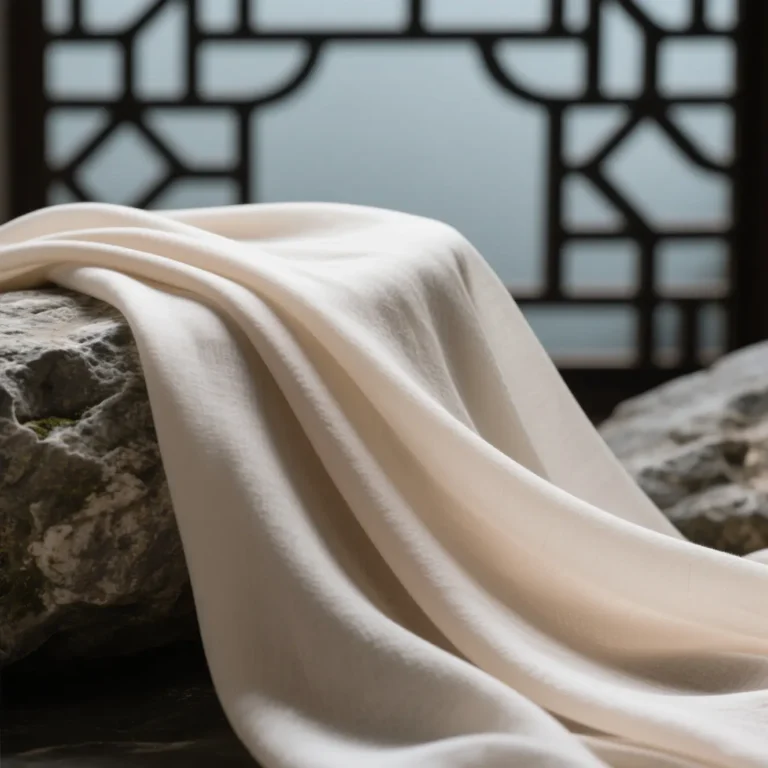Physical Address
304 North Cardinal St.
Dorchester Center, MA 02124
Physical Address
304 North Cardinal St.
Dorchester Center, MA 02124

In the dynamic world of textiles, Tencel fabric has emerged as a captivating subject of discussion, captivating the attention of fashion enthusiasts, sustainability advocates, and textile professionals alike. This remarkable material has not one, but two distinct concepts associated with it. Firstly, it can refer to the raw material of yarn that is blended with tencel and cotton. This unique combination brings together the best qualities of both fibers, creating a yarn that is both strong and soft. Secondly, tencel fabric can also refer to the fabric that is made by interweaving or blending tencel and cotton. This results in a fabric that is not only comfortable to wear but also has a beautiful drape and appearance.
For fabrics, tencel fabric specifically denotes a type of textile that is blended or interwoven with tencel and cotton. This blend represents a harmonious fusion of traditional natural materials and modern scientific and technological innovation materials, making it highly representative and popular in the textile industry. Tencel, a brand name for lyocell, is a semi-synthetic fiber made from wood pulp. It is known for its eco-friendly production process, which uses a closed-loop system to minimize waste and environmental impact. Cotton, on the other hand, is a natural fiber that has been used for centuries for its softness, breathability, and durability. When combined, tencel and cotton create a fabric that offers the best of both worlds.
One of the key advantages of tencel fabric is its exceptional comfort. The fabric is incredibly soft to the touch, making it ideal for clothing that comes into close contact with the skin, such as 内衣,shirts, and dresses. It is also highly breathable, allowing air to circulate freely and keeping the body cool and dry. This makes tencel fabric a great choice for activewear and summer clothing. In addition, tencel fabric has excellent moisture-wicking properties, which means it can absorb and release moisture quickly. This helps to keep the body dry and comfortable, even during intense physical activity.
Another advantage of tencel fabric is its durability. The fabric is strong and resistant to tearing and abrasion, making it suitable for a variety of applications. It is also easy to care for, as it can be machine washed and dried without losing its shape or color. This makes tencel fabric a practical choice for everyday clothing and home textiles. Furthermore, tencel fabric is hypoallergenic, which means it is less likely to cause allergic reactions or skin irritations. This makes it a great choice for people with sensitive skin or allergies.
Given its many advantages, tencel fabric has the potential to replace cotton in the future. However, it is not without its drawbacks. One of the main disadvantages of tencel fabric is its lack of silk-like texture. This is a common phenomenon in short fiber structures and can make the fabric feel slightly rougher compared to silk or other long fiber fabrics. While this may not be a major issue for some people, it can be a consideration for those who prefer a more luxurious feel. In addition, tencel fabric is relatively expensive compared to cotton. This is due to the higher cost of production and the limited availability of tencel fibers. As a result, tencel fabric may not be accessible to everyone, especially those on a tight budget.
Another challenge for tencel fabric is the limited variety of category styles. Currently, the range of tencel fabric products is not as extensive as that of cotton. This means that consumers may have fewer options when it comes to choosing clothing or home textiles made from tencel fabric. However, as the demand for tencel fabric increases, it is likely that more designers and manufacturers will start to incorporate it into their products, leading to a wider range of styles and designs.
Despite these challenges, tencel fabric is still a highly promising material with a bright future. As consumers become more environmentally conscious and demand sustainable fashion options, tencel fabric is likely to gain even more popularity. With continued research and development, it is possible that the drawbacks of tencel fabric can be addressed, making it an even more attractive alternative to cotton and other traditional fabrics.
In conclusion, tencel fabric is a fascinating material that offers a unique blend of comfort, durability, and sustainability. While it has some limitations, its many advantages make it a fabric worth considering for a variety of applications. As the textile industry continues to evolve, tencel fabric is likely to play an increasingly important role in shaping the future of fashion and home textiles.